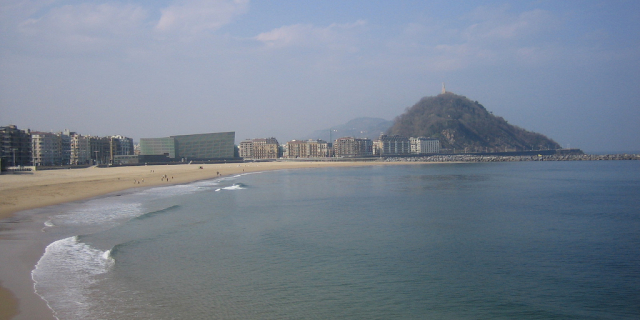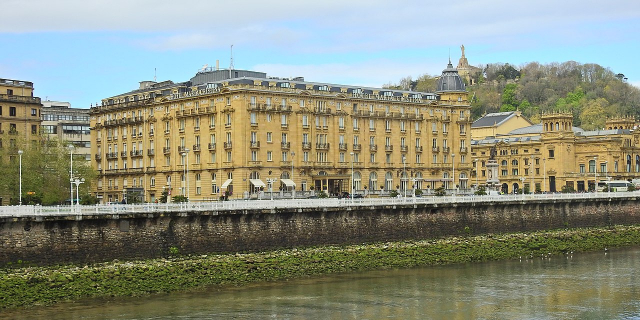Ascain
Ascain (French pronunciation: [askɛ̃]; Basque: Azkaine) is a commune in the Pyrénées-Atlantiques department in the Nouvelle-Aquitaine region of south-western France.
The commune has been awarded three flowers by the National Council of Towns and Villages in Bloom in the Competition of cities and villages in Bloom.
In 1609 Councillor Pierre de Lancre intervened in French Basque Country at the head of a commission of inquiry demanded by Henri IV. The commission was to "purge the country of all sorcerers and sorceresses under the influence of demons". The priest of Ascain was degraded then burned.[1]
The Bishop of Bayonne, Jean VI de Sossiondo, built a large house called "Askunda" here during the middle of the 16th century, which can still be seen.
In 1794, at the height of The Terror and after the desertion of 47 young people from Itxassou, the Committee of Public Safety (Decree of 13 Ventôse Year II - 3 March 1794) arrested and deported some of the men, women, and children from Ainhoa, Ascain, Espelette, Itxassou, Sare, and Souraïde; and declared the commune, as for other communes near the Spanish border, a "Notorious commune".[2] This measure was also extended to Biriatou, Cambo, Larressore, Louhossoa, Mendionde, and Macaye.
The inhabitants were: "gathered in various national houses or in the District of Ustaritz or in those of the Grande Redoubt, such as Jean-Jacques Rousseau".[3] In reality they were gathered in the churches then deported in very precarious conditions[4] to Bayonne, Capbreton, Saint-Vincent-de-Tyrosse, and Ondres. Departments where people from the communes were interned were Lot, Lot-et-Garonne, Gers, Landes, Basses-Pyrénées (the Béarnais part), and Hautes-Pyrénées.
The return of the exiles and the recovery of their properties were determined by a series of decrees issued on 29 September and 1 October 1794 - driven in this direction by the Director of Ustaritz: "The former communes of Sare, Itxassou, Ascain, Biriatou, and Serres, whose inhabitants have been interned for eight months as a measure of general security people have not been able to farm. The people who wish to obtain freedom to retire to their homes are clamouring for food without us being able to provide them with the means to fulfil this first human need, hunger".[5] The recovery of property was not done without difficulty: their properties had been sequestered but were not registered and so were looted: "Movable and immovable property of the inhabitants of Sare, were neither legally recognized nor disclosed; all our furniture and household effects were removed and brought confusedly to neighbouring communes. Instead of putting them in safe places, some were sold at auction or to any other party without auction".[6]
Heraldry Arms of Ascain
The arms were adopted by the commune on 26 June 1988.
Arms of Ascain
The arms were adopted by the commune on 26 June 1988.
Blazon:
Or, an oak Vert terraced in base the same, fruited in Or and trunked proper all debruised by a boar armed Argent bordure of Gules charged with 8 small saltires couped of Or.
These arms were registered for the first time on 5 July 1405 by Juan Martinez de Agorreta y Ascain, Lord of Agorreta and Ascain, who married Princess Leonor Tocco de Acciaioli, from the Florence House of Acciaioli.[7][circular reference][8]
1) How much bread to give to each man (we have no bread so it does not matter)?
2) Can we allow them to purchase wine or other provisions?
3) We note that we have no meat;
4) Can we allow them to have a light at night from a lantern?
5) Can we allow them to have mats or mattresses? We have provided them with straw to sleep;
6) Can we allow them out two-by-two to wash their clothes?
7) If they are sick, are we authorised to take them out of the detention house to show the others that they are to be treated?







































Add new comment